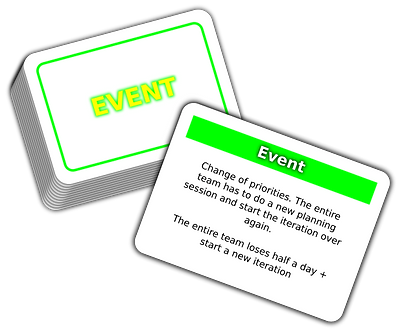


Simulate what?
The objective of this simulation is to experience what happens when you plan an iteration and several things occur, that impact the scope of your iteration.

It all start with the product backlog. The product owner get a deck of product backlog item cards and he/she needs to prioritize these product backlog items. There are several way how he/she can do this. It is up to him/her to decide how the backlog will be prioritized. But the following criteria can help:
-
MoSCoW score
-
Business value
-
Workload (to select the weighted shortest job first)
When the backlog is ordered, leaving out the items that will not be implemented (yet), the product owner will put a first selection these items in the Backlog column of the Kanban board.
The team will then decide which backlog items they intend to implement during the next iteration, based on their capacity. They move these backlog items to the Planned column.
And then the fun starts...
After working on an item, a team member can notice that the estimated time for that activity is not enough and needs to increase the estimate.
Or an item gets blocked because you need to wait for input or a decision of someone else.
Events can occur. An event is something unforeseen that impacts either your team's capacity or the priorities. And this can be in a positive way or - most likely - in a negative way. The immediate impact of the event is either on an individual team member or on the entire team.

But unplanned work can have the biggest impact on your iteration delivery, especially when a lot of high priority work comes along the way. Off course it is up to the product owner to decide what to do with the unplanned work:
-
execute immediately
-
plan for the next iteration
-
park
But I guess you cannot ignore a high priority item without getting angry customers...
